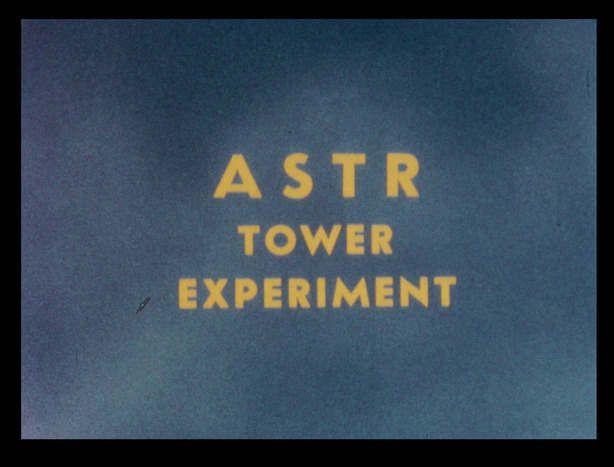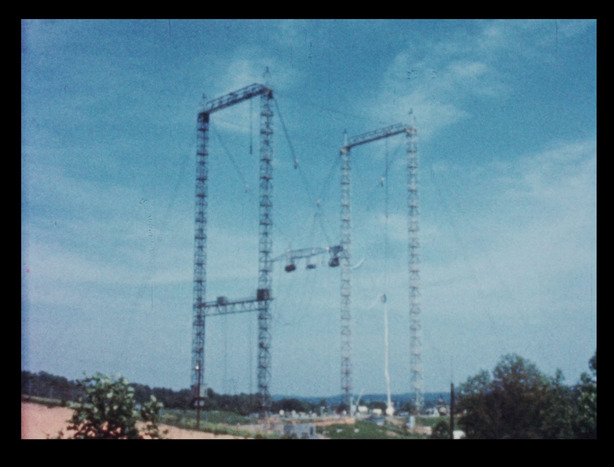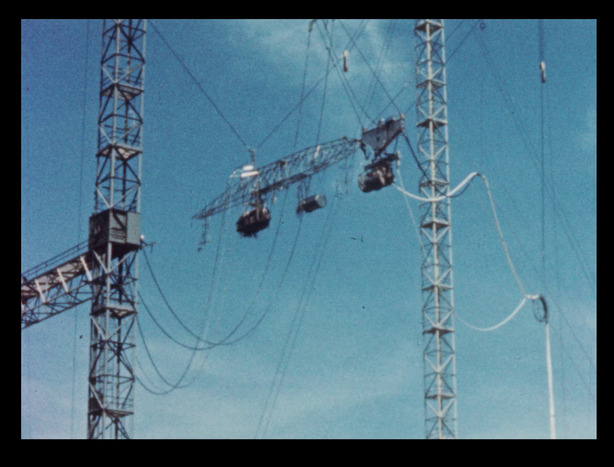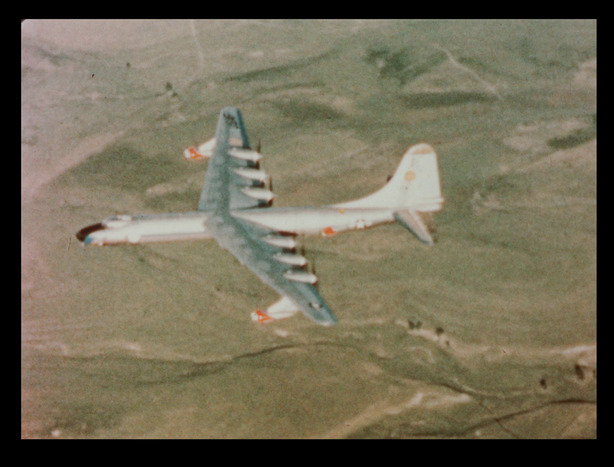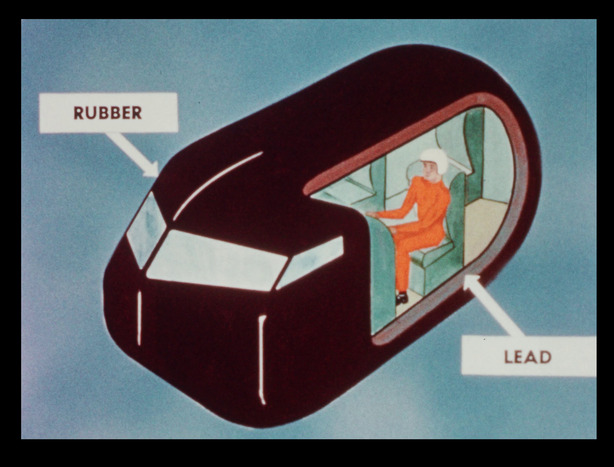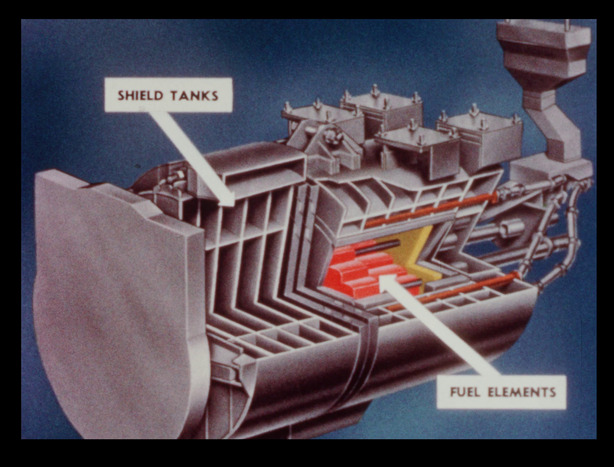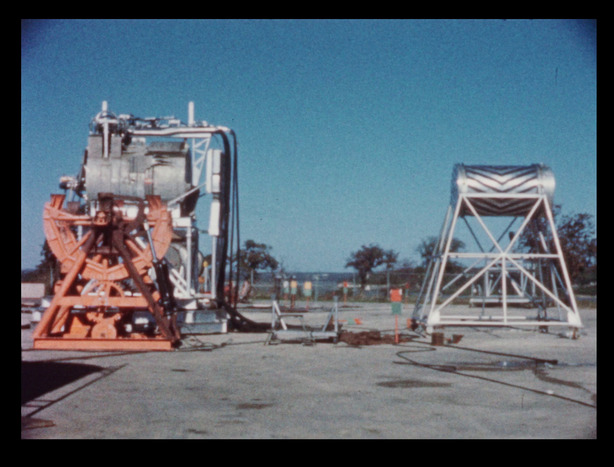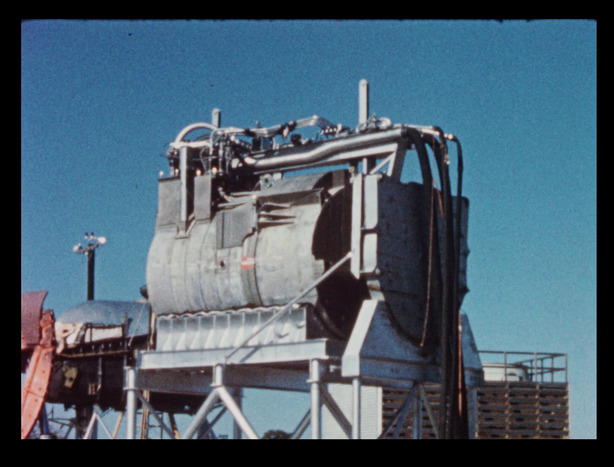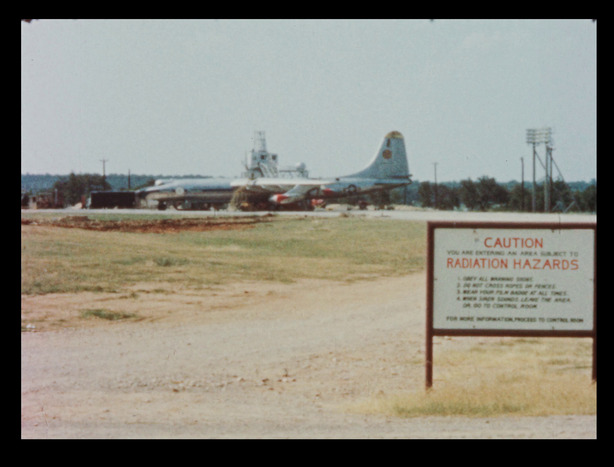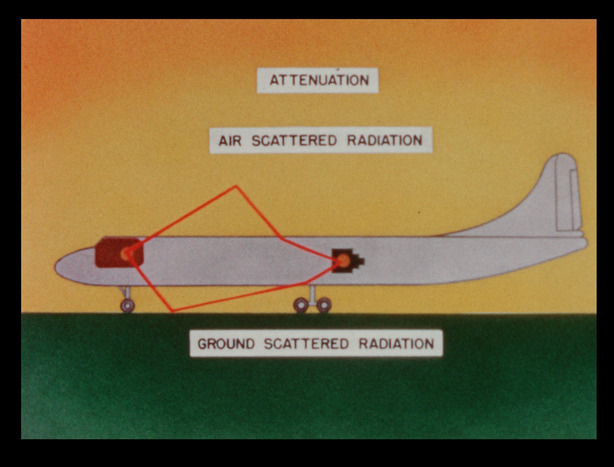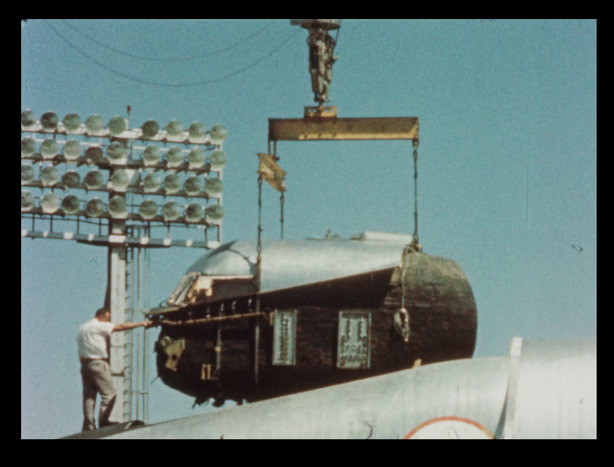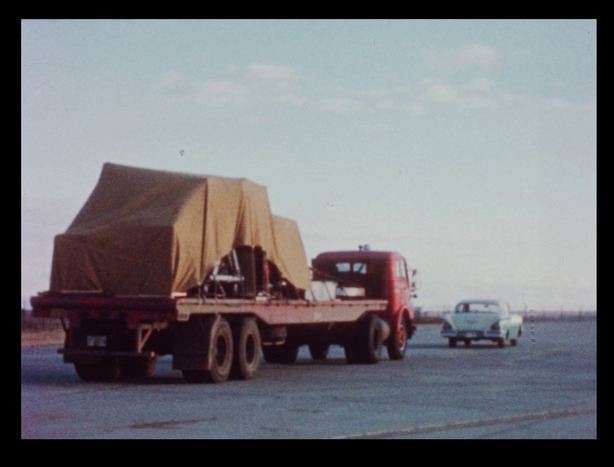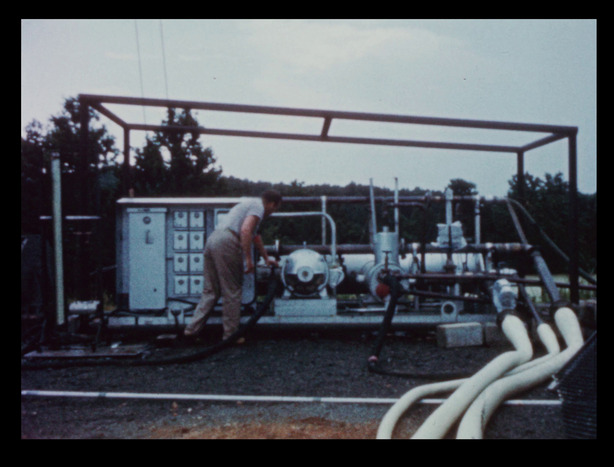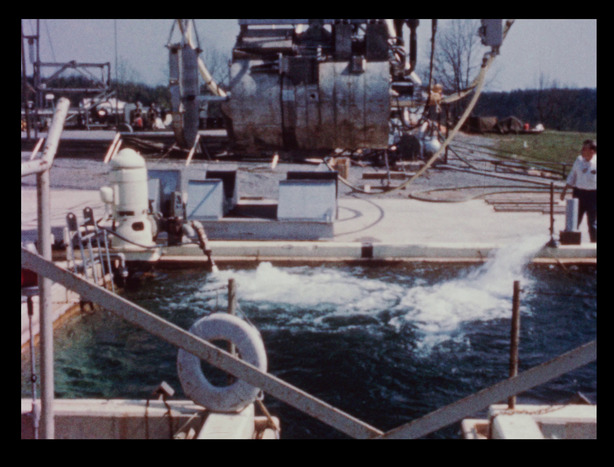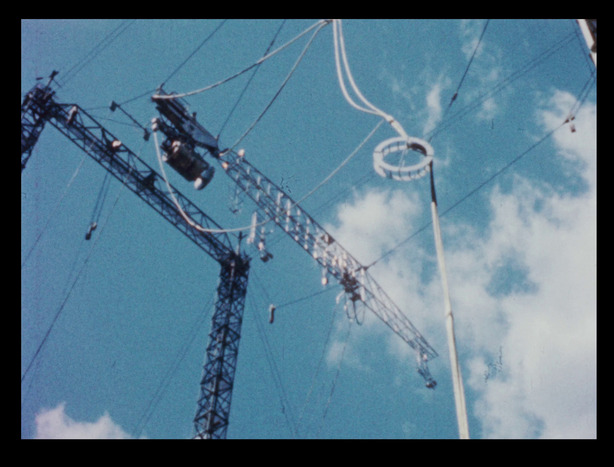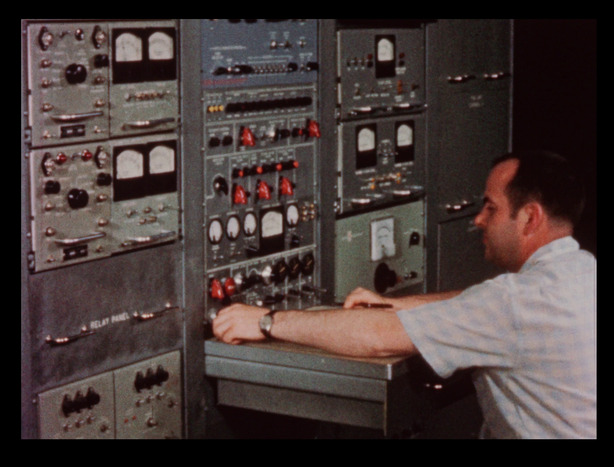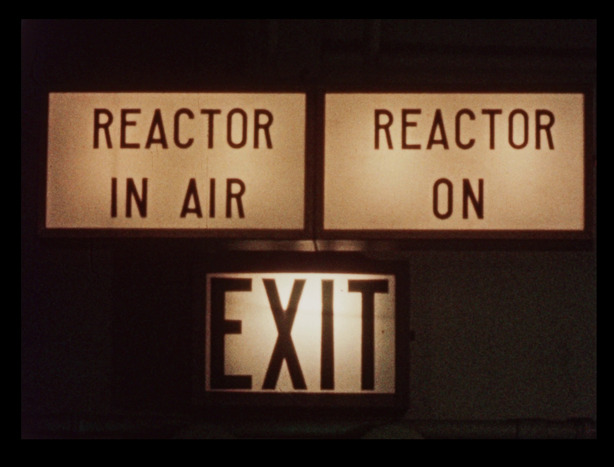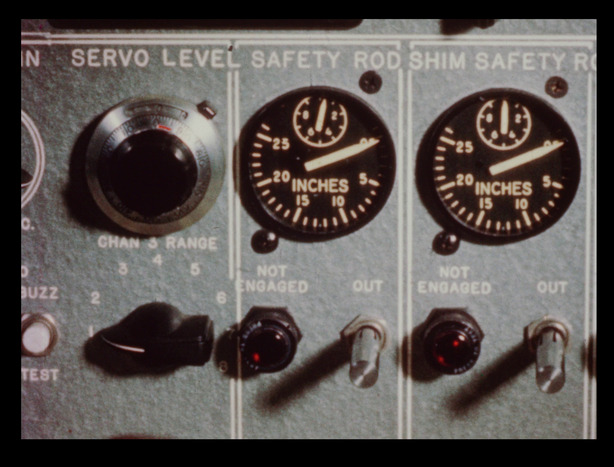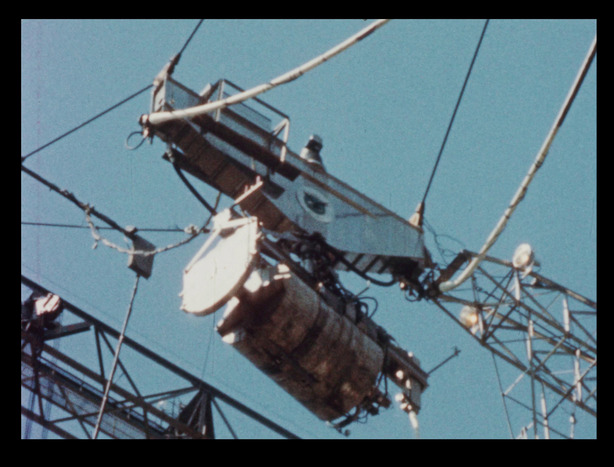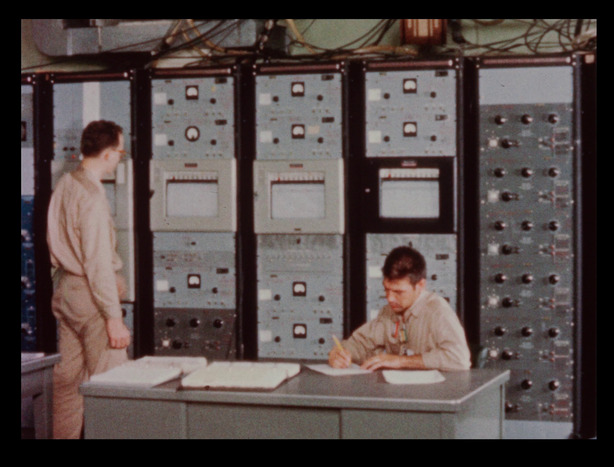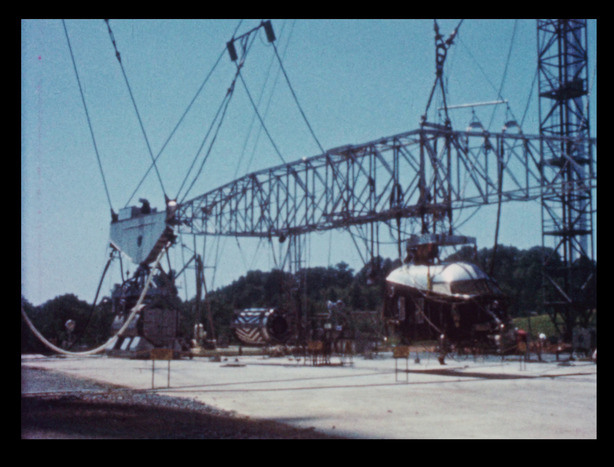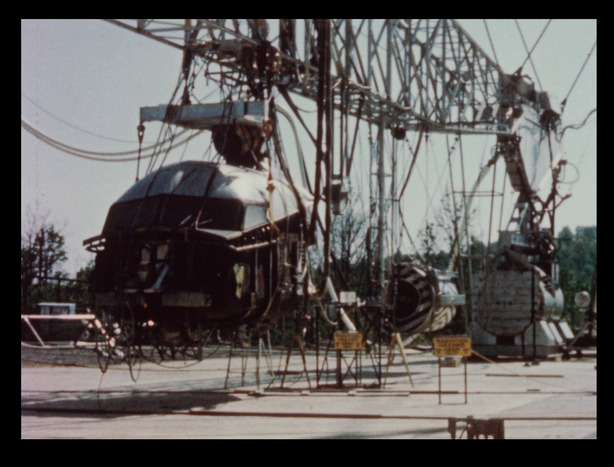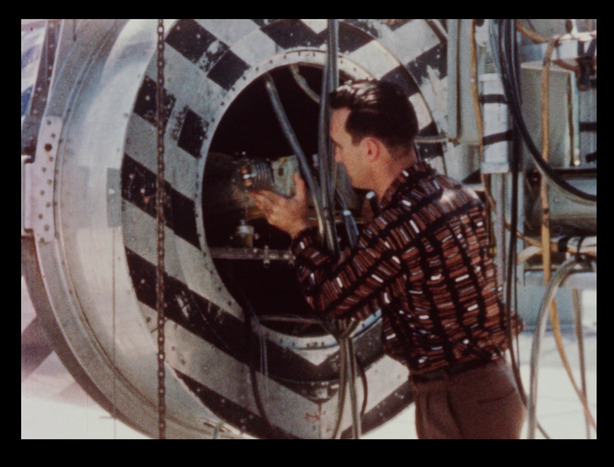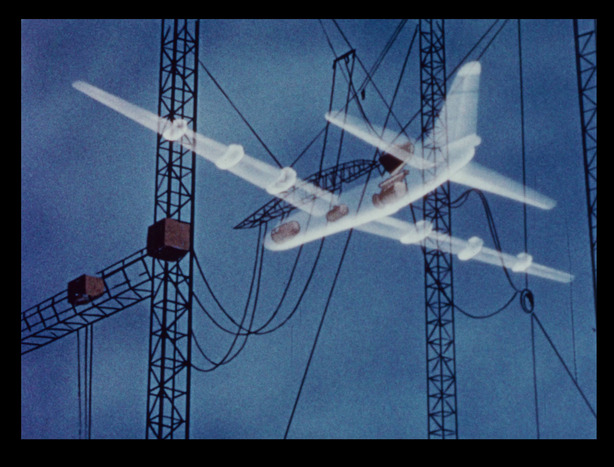ASTR Tower Experiment Film
The Reactor that Flew (1958)
By Nick Touran, Ph.D., P.E., 2024-11-08 , Reading time: 9 minutes
In January, 1946, the U.S. Air Force started working to build a long-range nuclear-powered bomber. The program evolved and became multi-pronged and truly massive. At one point they actually loaded a nuclear reactor onto an airplane, took off, and turned the reactor on in flight (it didn’t propel the plane though). We recently learned of a historic film from 1958 discussing this flying reactor and follow-up experiments where they lifted it up into the air on a huge tower in Oak Ridge. We found it, got it scanned, and have posted it online here:
Catalog description: Coverage of the transfer of the Convair Airborne Shielded Test Reactor and NB-36 crew compartments from Ft. Worth, Texas, to Oak Ridge, Tennessee National Laboratories for further airborne and ground radiation reflection tests using a tower rig. 1) Animation and live photography depicting early airborne tests of the ASTR using the NB-36 aircraft. 2) Crew compartment of the NB-36 being removed. 3) Reactor is removed from the Convair storage pool and placed on a flat bed trailer. 4) Truck convoy carrying the reactor, crew compartments, and associated test equipment leaving the Convair test site at Ft. Worth and arriving at the National Laboratories, Oak Ridge, Tennessee. 5) Preparations for, and mapping of, ground radiation reflection from the reactor at the tower site. 6) Radiation reflection testing of the crew compartment, and a 1/2 scale crew compartment suspended from the towers, in the same relationship to the reactor as they were in the NB-36 aircraft. Good (Basic: Orig color, A&B Rolls)
This is film 67389 in our catalog.
Thanks to Gil Brueckner for making this happen!
More info about the ASTR
The Air Force Programs (NEPA and ANP) built reactors hooked to jet engines and also built the first molten salt reactor: the Aircraft Reactor Experiment. Besides reactor and heat transfer technology, radiation shielding questions needed answers. Could pilots and crew in a nuclear-propelled aircraft be appropriately shielded from the radiation? What kind of radiation scattering would occur off the air under and around the reactor?
To answer these questions, the NB-36 program was created to operate a nuclear reactor onboard a flying aircraft. The reactor would be at power, but would not itself be propelling the aircraft. On September 5, 1955 the first nuclear reactor to operate in the air went critical in a modified Convair B-36 called the Nuclear Test Aircraft (NTA). The reactor put onboard was the Aircraft Shield Test Reactor (ASTR).
The NTA flew 47 flights over two years with the reactor on it. It took off from Carswell Airforce Base in Texas with the reactor shut down, flew to the New Mexico desert, then powered up the reactor for testing, then powered it back down and flew back to base. (ref: NX-2) Remotely coupled hydraulic, mechanical, and electrical connections were tested many times before the reactor was operated at high enough power to become overly radioactive.
As a shield test reactor, the reactor necessarily emitted lots of radiation, to the point that personnel access to unload, maintain, and reload the reactor into and out of the aircraft was prohibited. It was all done remotely, with sophisticated reactor handling equipment.
For maintenance, the reactor was removed from the aircraft, placed into a large pool of water, and then maintained with long tools. The reactor was placed into a cradle that allowed it to be flipped over: forward side up for fuel loading/unloading, and aft side up for instrumentation and control adjustments.
Great photos of the equipment trucks/etc. (Gantz, 1960, p. 187)
The ASTR had the following characteristics (Nance & Perry, 1958):
- Thermal power: 1000 kw
- Thermal flux: 6.3e12 avg, 1.2e13 peak
- Fuel: plat type U-Al with Al clad (MTR type)
- Isotope: 150 gm U-235 per element, 4800 gram U-235 total
- Shape: Right cylinder on side
- Control: 3 cadmium-lined steel rods inserted horizontally from aft
- Coolant: light water, 500 gpm
- Heat sink: Water (ground operations), Air (flight operations)
In 1959, the ASTR was redesignated as the Aerospace Systems Test Reactor and upgraded from 1 to 3 MWt. In 1963 it was further modified and updated to 10 MW. It was also once known as the Aerospace Shield Test Reactor. It was used to support other astronuclear-related work (Warinner, 1983).
The reactor was permanently installed at the Nuclear Aerospace Research Facility (NARF) at General Dynamics/Fort Worth, Texas, for shielding, cryogenic-heating, and radiation-effects experiments.
The Tower Shielding Facility was a facility in Oak Ridge, TN where they hooked operating nuclear reactors up to cables and lifted them high into the air to measure various characteristics of elevated radiation sources and shielding (Muckenthaler, 1997). It was built as part of the ANP.
As of 2024 the towers are still standing.
Read more about the Aircraft Shield Test Reactor
- (Nance & Perry, 1958)
- Temperature Coefficient of The ASTR (Nucleonics, Aug 1956)
- Giving Wings to the Atom Aircraft Nuclear Propulsion (Unofficial archives)
- Aircraft Nuclear Propulsion: An Annotated Bibliography
- Convair NB-36B Wikipedia
- 3-D interactive view of TSF
- Nice pic of TSF
- ORNL-2517 Aircraft Nuclear Propulsion Project Quarterly Progress Report for period ending March 31, 1958
- Gantz, K. F. (1960). Nuclear Flight; the United States Air Force Programs for Atomic Jets, Missiles, and Rockets. Duell, Sloan and Pearce. https://catalog.hathitrust.org/Record/001622330
- Nance, J. D., & Perry, L. W. (1958). Aircraft Shield Test Reactor. Nucleonics, 16(1), 58–61. https://archive.org/details/sim_nucleonics_1958-01_16_1/page/58/mode/2up
- Warinner, D. K. (1983). Comparison of the Aerospace Systems Test Reactor Loss-of-Coolant Test Data with Predictions of the 3D-AIRLOCA Code (No. CONF-8310176-2; Issue CONF-8310176-2). Argonne National Lab., IL (USA); Oak Ridge National Lab., TN (USA). https://www.osti.gov/biblio/5455996
- Muckenthaler, F. J. (1997). The Tower Shielding Facility: Its Glorious Past (No. ORNL/TM-12339; Issue ORNL/TM-12339). Oak Ridge National Lab. (ORNL), Oak Ridge, TN (United States). https://doi.org/10.2172/303930
Help find these non-digitized references
- EQUIPMENT MODIFICATIONS FOR THE ASTR-TSF EXPERIMENT
- CALIBRATION OF THE ASTR
- ENVIRONMENTAL RADIOACTIVITY IN THE NTA TEST AREA AND FLIGHT CORRIDOR
- OPERATION AND INSTRUCTION MANUAL FOR THE NTA NUCLEAR INSTRUMENT CONTROL CONSOLE
See Also
- A related film about the ANP
- Our Digital Reactor History Museum
- Our Reactor Development History Page
- Our Old Videos page with a running list of the available and yet-to-be-scanned films out there.
If you’re interested in helping to get some of these scanned, check out our digitization GoFundMe and/or contact us!
Reader comments
